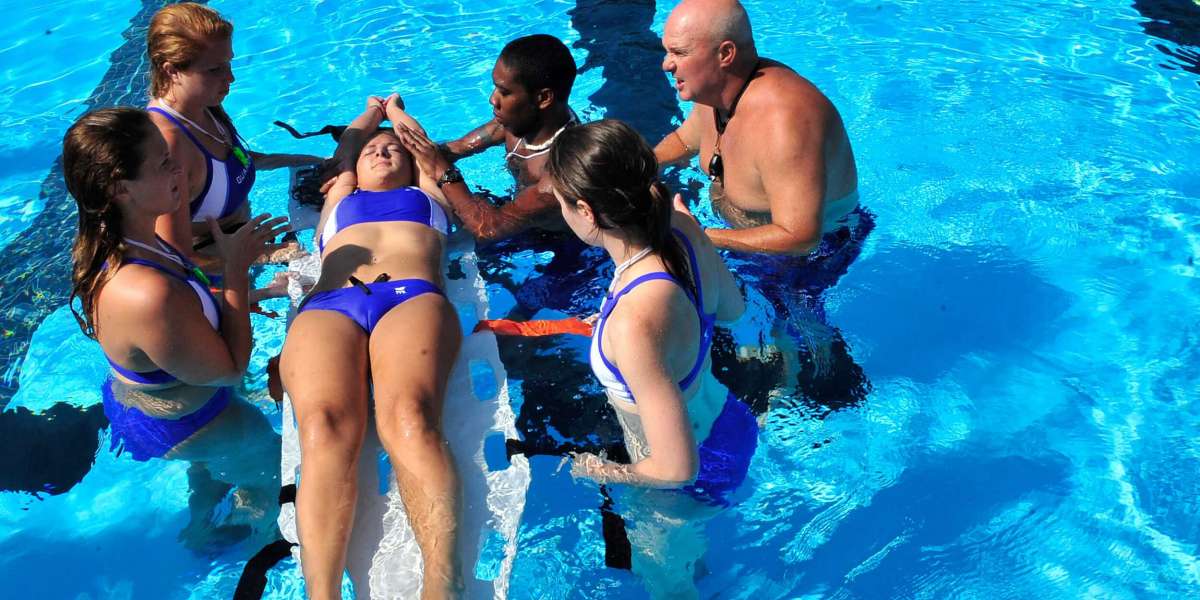Becoming a lifeguard is more than just a summer job; it's a responsibility that requires a unique set of skills to ensure the safety and well-being of others. Lifeguard training programs are designed to equip you with the knowledge and abilities necessary to handle emergencies, prevent accidents, and provide care until professional help arrives. In this comprehensive guide, we will explore the essential skills you will learn in lifeguard classes.
Water Rescue Techniques
One of the primary roles of a lifeguard is to perform water rescues. You will learn various techniques to safely and effectively rescue individuals in distress. These techniques include:Approach
Front and Rear Approaches: Approaching a distressed swimmer from the front or rear, ensuring their safety while avoiding personal risk.
Rescue Strokes: Using strokes such as the front crawl or breaststroke to quickly reach a person in need.
Towing Techniques: Learning how to tow a swimmer to safety, using methods like the cross-chest carry or the clothes tow.
CPR and First Aid
Lifeguard training includes comprehensive CPR (Cardiopulmonary Resuscitation) and First Aid certification. You will learn:
Chest Compressions and Rescue Breaths: Performing effective chest compressions and rescue breaths to maintain oxygen flow to the brain and vital organs.
Automated External Defibrillator (AED) Usage: Understanding how to use an AED to restore a normal heart rhythm during sudden cardiac arrest.
First Aid Skills: Treating injuries such as cuts, bruises, sprains, and fractures, as well as managing medical emergencies like allergic reactions and heat exhaustion.
Spinal Injury Management
Handling potential spinal injuries is a critical aspect of lifeguard duties. Training will cover:
Spinal Backboarding: Securing a victim to a backboard to immobilize the spine and prevent further injury.
Head Immobilization Techniques: Techniques to stabilize the head and neck during rescues and while placing a victim on a backboard.
In-Water Spinal Management: Procedures for safely managing a suspected spinal injury in the water.
Surveillance and Scanning Techniques
Effective surveillance is crucial for preventing accidents and responding quickly to emergencies. Lifeguard classes will teach you:
Scanning Methods: Systematic techniques to continuously monitor swimmers and identify potential hazards.
Zone Coverage: Understanding and managing different zones of responsibility within a pool or beachfront to ensure comprehensive coverage.
Early Recognition of Distress: Identifying the subtle signs of a swimmer in trouble before the situation escalates.
Communication Skills
Clear and effective communication is vital for lifeguards. You will learn:
Whistle Signals: Standard whistle signals to alert swimmers and communicate with other lifeguards.
Hand Signals: Using hand signals for non-verbal communication during rescues and emergencies.
Public Interaction: Skills to communicate safety rules and guidelines to the public effectively.
Emergency Action Plans
Lifeguards must be prepared to implement Emergency Action Plans (EAPs). Training will cover:
Role Identification: Understanding your specific role during an emergency situation.
Emergency Procedures: Step-by-step procedures to follow during various types of emergencies, such as water rescues, missing persons, and severe weather.
Post-Emergency Protocols: Actions to take after an emergency, including incident reports and debriefing sessions.
Physical Conditioning and Endurance
Lifeguarding requires a high level of physical fitness. Classes will emphasize:
Swimming Proficiency: Building speed, strength, and endurance through regular swimming practice.
Strength Training: Exercises to improve muscular strength and support rescue activities.
Cardiovascular Fitness: Enhancing cardiovascular health to handle the physical demands of lifeguarding.
Risk Management and Prevention
Preventing accidents is a key responsibility. Training will include:
Identifying Hazards: Recognizing potential risks in the environment, such as unsafe weather conditions, dangerous marine life, and pool equipment issues.
Implementing Safety Measures: Establishing and enforcing safety protocols to minimize risks.
Public Education: Educating swimmers about water safety rules and best practices.
Legal and Ethical Responsibilities
Lifeguards must be aware of their legal and ethical duties. Training will address:
Legal Obligations: Understanding the laws and regulations governing lifeguarding and water safety.
Ethical Conduct: Upholding high ethical standards in all aspects of lifeguarding, including professionalism, confidentiality, and respect for individuals.
Teamwork and Leadership
Lifeguarding often involves working as part of a team. Training will focus on:
Collaborative Efforts: Coordinating with other lifeguards and emergency personnel during rescues and emergencies.
Leadership Skills: Developing the ability to lead and make critical decisions under pressure.
Conflict Resolution: Handling disputes and conflicts professionally and effectively.
Finalization
Lifeguard classes provide a comprehensive education that prepares individuals for the diverse challenges they will face. By mastering these essential skills, you will be well-equipped to ensure the safety and well-being of swimmers and beachgoers, making a significant impact in your community.








